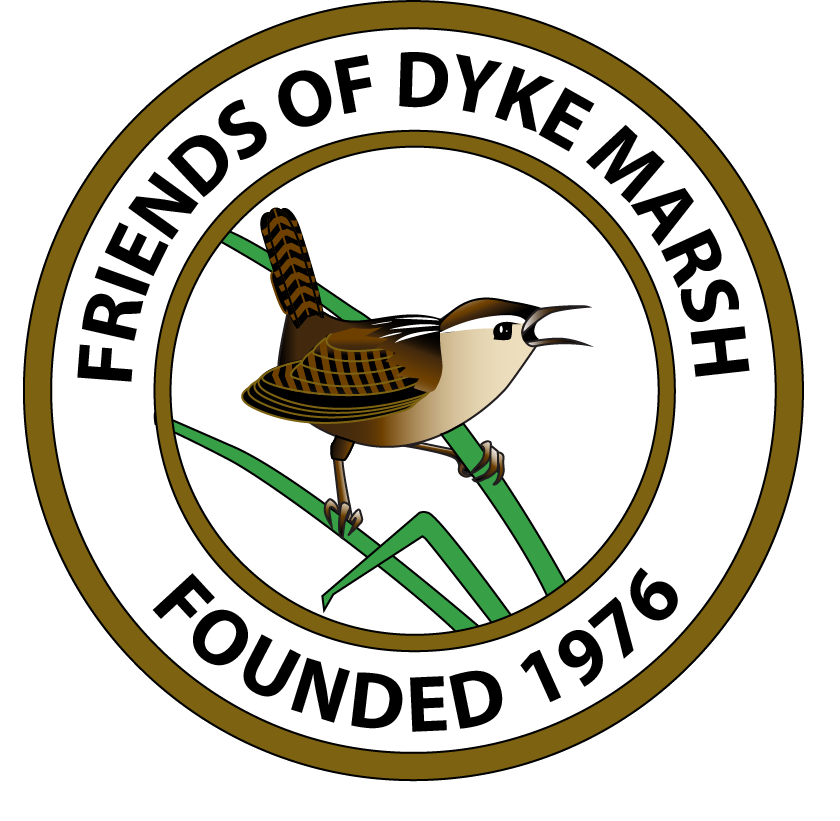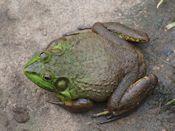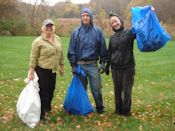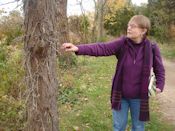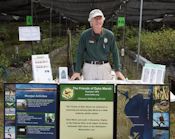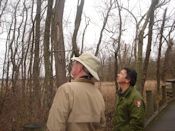FODMer Laura Sebastianelli lives on the edge of the western part of the Dyke Marsh Wildlife Preserve, the 26 acres west of the George Washington Memorial Parkway, a place she describes as "rich with natural sounds."
Laura admits to a “natural bias,” meaning she loves the sound of nature. She wrote, "Now technically nature includes us humans, but I confess my bias is for birds, insects, frogs, toads, mammals, gentle wind blowing through treetop leaves and water lapping at shoreline edges."
With this playlist, Laura shares some of the wonderful sounds of Dyke Marsh. American bullfrog picture courtesy of Laura Sebastianelli.
